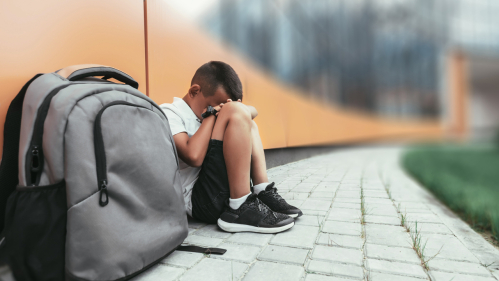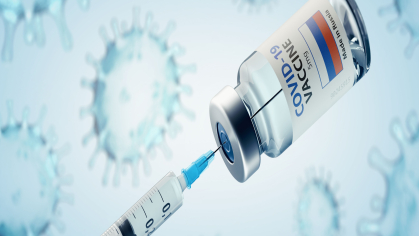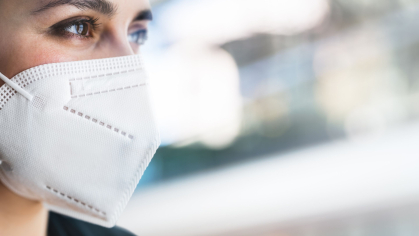Back to School Brings Mental Health Challenges. Rutgers Steps Up Efforts to Help.

Rutgers UBHC mental health clinicians promote post-pandemic emotional health of the state’s students and educators
It’s the big question that’s been top of mind for most parents since March 2020: What will it be like when our kids finally go back to school?
After a volatile 18 months of remote learning, flip-flopping hybrid schedules, social isolation, quarantines, and other fallout from the pandemic, New Jersey students are returning to full-time, in-person instruction – and bringing a host of mental health issues with them.
“We anticipate that every one of our students is going to need some kind of support this year,” said Gail Pawlikowski, assistant superintendent of Edison Public Schools, one of the largest districts in the state, which partners with Rutgers to provide mental health services for students and staff, “and they are going to need more than usual.”
To meet this impending need in New Jersey, Rutgers University Behavioral Health Care (UBHC) hired an additional 30 mental health clinicians this summer specifically to work with school districts to promote the post-pandemic social and emotional health of the state’s students, teachers and staff, said Sonia Rodrigues, director of school and community programs with Rutgers UBHC, which oversees school-based contracts with all public, private, charter and out-of-district schools in New Jersey.
“We are dealing with a lot of anxiety around returning to school,” said Rodrigues. “We struggled with the transition of being home and teaching our children on a virtual platform. Now there is a struggle with the transition back to school. How do you support all these students' emotional needs after they have been out and not connecting with their peers for so long?”
What issues does Rodrigues anticipate will come up most for students? That will vary greatly, depending on age and how the pandemic personally impacted their education and their family. Younger students, she said, may struggle with leaving the comfort of their home or experience separation anxiety after being with caregivers almost around the clock.
“They won’t be sitting near each other. There may be glass shields separating them when they return to class. They can’t hug or high five or share toys,” she said. “It’s important to normalize how different this is for everyone and remind them that if they are dealing with frustration and anxiety they aren’t the only one feeling this way.”
Early childhood educators should also brace for a 10-percentage point rise in problem behaviors among Pre-K students, said Steven Barnett, a co-director of the National Institute for Early Education Research (NIEER). That estimate is based on the results of three NIEER surveys conducted between June 2020 and June 2021 with a national sample of about 1,000 families with children ages 3 to 5.
“These are levels that are more than twice what we would have expected from pre-pandemic data,” said Barnett of the PNC Foundation-funded surveys. “Over the course of our surveys, they are getting worse rather than better.”
That’s likely because lockdowns and remote education prevented many of our littlest learners from accessing traditional education and socialization, he said, and instead put them at home with stressed parents who lost jobs or were trying to work remotely while caring for and educating their children.
“The big concern is incoming kindergartners will have more difficulty because they will be less prepared and have higher levels of these problem behaviors," said Barnett, who added this could be compounded by an anticipated spike in kindergarten enrollment after a number of parents opted to hold children back last year rather than start school during COVID. “If they can't follow directions or get along well with each other, they are more distracted and not just creating a problem for themselves but for the whole class.”
When it comes to middle and high school students, especially those who studied remotely with cameras off during lockdown, Rodrigues said they may experience physical anxiety about returning to school and try isolating or acting out. Staff and parents are also susceptible to elevated levels of anxiety and depression, she said, which can stem from fears about anything from the surging Delta variant and ongoing mask battles to future quarantines, school shut-downs and educational gaps widened by remote learning.
For years, Edison Public School District has partnered with UBHC community programs with positive results, said Pawlikowski. This year Edison is among dozens of districts statewide utilizing millions in federal COVID relief funds to secure additional UBHC clinicians to help support their staffs – giving guidance on warning signs to watch for and offering tips to help students and staff manage their stress. And when the need arises, they offer immediate connections to outside therapists and inpatient facilities.
“This year you can’t excuse away what you are seeing in the moment. You need to say: That kid is quiet. What’s wrong? That kid is covering his head with a hood all day. What’s wrong? That kid seems really angry, why are things setting him off?” Pawlikowski said. “We need to make sure we are not making assumptions and that we are reaching deeper to understand what else has been going on in these kids’ lives.”
Rodrigues notes that public schools were struggling to meet its students' mental health needs prior to the pandemic – especially with school shootings and teen suicides on the rise – but she is hopeful this year’s additional federal funding will beef up counseling services in schools that will have a long-term impact.
“Everything is connected. We can't expect kids to get to school and learn if their mental health needs are not being met,” she said. “If a child is depressed and withdrawn, they are not going to be able to connect and learn.”


